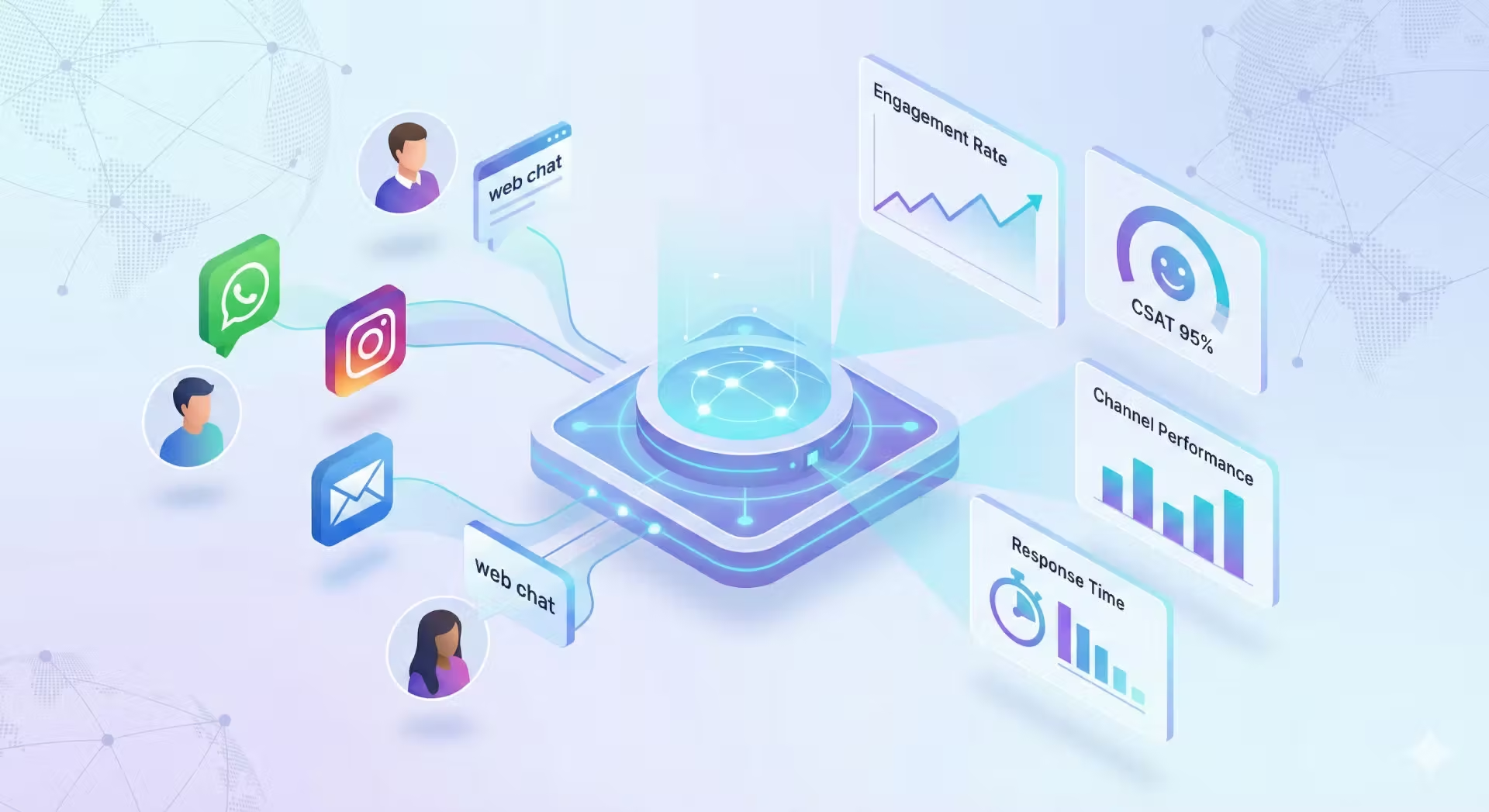Nice job! 👏 If you're reading this blog, you see the potential of using Facebook Messenger for your business. And trust me, you should. With already over 1.3 billion users, it would be a waste for you not to be active on Facebook Messenger too.
In this article, I'll tell you everything you need to know about adding Facebook Messenger to your website. You'll learn:
- Why you should add Facebook Messenger to your website
- How to add Facebook Messenger to your website:
- Using the Facebook chat plugin
- Using a multichannel website widget
Why you should add Facebook Messenger to your website
There are several reasons why you should consider adding Facebook Messenger to your website.
Offer service via your customer's favorite channel
You might spend half an hour a day scrolling on Instagram, while your mom might spend her whole afternoon tagging you on Facebook. Every person prefers a different channel. That's why you should offer service via multiple channels. By adding Facebook Messenger to your website, you'll make a lot of customers very happy.
Receive a clear customer profile
By adding Facebook Messenger to your website, you kill two birds with one stone. When a customer sends you a Facebook message, you directly have access to the customer's Facebook profile. Here you can find interesting insights, depending on the privacy settings of the customer. For example, age, country, interests, job, and so on. You can use this information to make the conversation more personal or to create a clear customer persona.
Keep the conversation going
When a customer sends you a message via live chat, you won't be able to get back to them after they leave. And since customers are getting less patient every day, they tend to leave the chat faster than ever.
By adding Facebook Messenger to your website, customers can experience the benefits of live chat — without having to stay on your website waiting for an answer. The conversation can continue in the Facebook Messenger app on their phone. This improves their experience and gives you more time to reply.
Make it more personal
Facebook is where you stay connected with family and friends. The content we post on Facebook is mostly personal and informal. If you start engaging as a business in that environment, you automatically build a more personal customer relationship. Especially if you manage to keep a fast response time and use an informal tone of voice.
Automatically increase your Facebook followers
Make sure your customer has a good experience on Facebook Messenger and you'll probably gain a new Facebook follower. Building your follower base is good for both social proof and building customer relationships.
How to add Facebook Messenger to your website
There are two ways you can add Facebook Messenger to your website:
- Install the Facebook chat plugin
- Use a multichannel website widget
Install the Facebook chat plugin to your website
The Facebook chat plugin is a free chat extension that you can install on your website. When a customer visits your website and clicks on the Messenger icon, they can directly start a chat with your business via Facebook Messenger.

You can install the Facebook chat plugin in two steps:
- Set up the chat plugin from your Facebook Page
- Add the chat plugin to your website
This option requires some knowledge of coding. So I recommend you ask your in-house developer to help you out.
Use a multichannel chat widget
If you would like to add not only Facebook Messenger to your website but other channels as well, a multichannel chat widget might be the solution for you.

You can add a multichannel widget to your website with the right software solution. With a customer service platform like Trengo, you can set up a widget that contains the following channels:
- Facebook Messenger
- Voice
- SMS
- Live chat
The best part of using a multichannel website widget? You receive all chats in one inbox, which makes your customer communication a lot easier.
Start with Facebook Messenger
I hope this article gives you all the input you need to add Facebook Messenger to your website. It requires a little action, but it will turn Facebook users into happy customers.
Would you like to improve your customer service via Facebook Messenger? Here are some nice readings on the subject:




.png)











